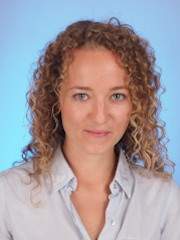Dr. Claudine von Hallern

Photo: A. Wedemeyer
Postdoctoral Researcher
Address
University of Hamburg
Faculty of Mathematics, Informatics and Natural Sciences
Department of Mathematics
AM – Applied Mathematics
Grindelberg 5
20146 Hamburg
Office
Room: G409
Contact
Tel: +49 40 42838-7748
